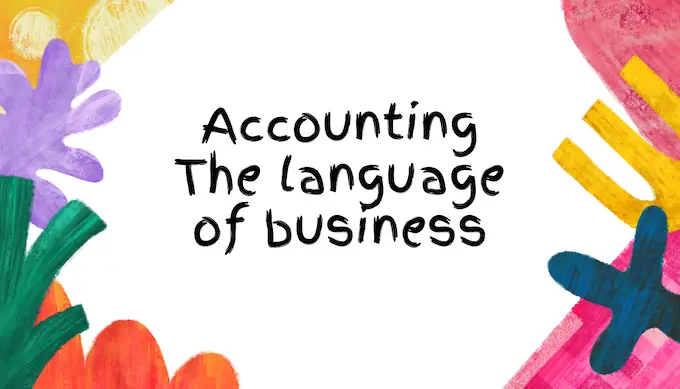Dear daughter, it was great to hear that you want to learn the language of business: accounting!
It is a great way to learn to pay for a seminar or classes. It saves a lot of time when you learn from someone who already did what you want to do, than learning on your own.
However, it always gives me great results to learn a bit on my own, and then pay for the seminar or the classes. It helps me to ask the right question to the person who knows the topic, instead of going there just to listen. This is usually known as “Do your homework first”.
Here is a crash course on the basis of accounting.
Probably the most important thing to understand for a beginner is twofold:
- The accounting equation
- How to register a transaction, a.k.a. bookkeeping.
The accounting equation
Assets = Liabilities + Owner equity
This simple equation is the foundation of the double-entry accounting system. This system, in plain English, states that money is not just created, or doesn’t just disappear. Each transaction has to be registered twice, as a credit and as a debit.
The accounting equation is what guarantees that the balance sheet remains balanced.
Assets are everything you own. It can include cash, properties, inventory, etc.
Liabilities are anything you owe to anyone. It can include mortgages, loans, account payables, etc.
Owner equity, also shareholder equity, is the total assets minus the total liabilities (as per the accounting formula). In other words, if you sell everything and pay all your debts, what is left is owner equity.
Remember this is just a general introduction without many details, so you get a basic understanding.
Registering a transaction (bookkeeping)
One way to understand how to register transactions is using the T accounts. A T account is a table with two columns and as many rows as needed. One column will be for debits (taking money out) and the other one for credits (putting money in).
The accounting system has several accounts. This is usually called the chart of accounts. Here are some examples:
- Cash: This one tracks the cash you have.
- Account payable: This one tracks money you owe in the short term, Let’s say you bought inventory on account, and you have to pay the account at the end of the month.
- Account receivable: This one is when you give a product that will be paid at a later stage. It is money that is reflected in your accounting system, but that you still don’t have in your bank account.
There are many more accounts, usually, they are regulated depending on the country you are in.
So, let’s record the following transaction: The owner of a business puts into the business 100 $, so at a later stage the business can use it to buy inventory.
Let’s say we are starting a new business, so there are no assets and no liabilities, so the accounting equation equals 0 on both sides.
Now, you will register the 100 $ as cash in your cash account. It will be like:
Date: 2/9/2023
Description: Cash deposit by the owner
Amount: 100 $
If you only register this transaction once, let’s see what the accounting equation will tell us.
Assets = Liabilities + Owner equity
100 = 0 + 0
As you can see, the accounting equation is not balanced. So, let’s add the second transaction.
In the account owner equity:
Date: 2/9/2023
Description: Cash deposit by the owner
Amount: 100 $
As the owner puts money into the business, that money becomes owner equity. Remember that the concept of owner equity is total assets minus total liabilities. So, if the total assets are 100 $, and the total liabilities are 0, then owner equity is 100 $.
After the second transaction is recorded, we check again the accounting equation:
Assets = Liabilities + Owner Equity
100 = 0 + 100 = 100
As you can see, the equation is balanced. This tells us that we successfully recorded the transaction.
Net worth
A nice way to start applying this concept is to calculate your net worth.
Your net worth, in plain English, is the number resulting if were to sell everything you own and then you pay everything you owe.
So, record everything you own: clothes, shoes, jewelry, computer, savings, and anything that has a price. Don’t try to be exact about the prices, just an estimate will be enough.
Record everything you owe, money borrowed, student loans, mortgages, etc.
Then apply the accounting equation. When you subtract liabilities from your assets, that number is your net worth.
Remember here we are talking about your financial net worth, not about how much you are worth.
For me, you are worth the world! Period, end of discussion.
Net worth is about keeping track of how much money you will have if you were to sell all your assets and pay off all your liabilities. Two very different things, isn’t it?
Now, what is a millionaire? By definition, a millionaire is a person whose net worth is 1 million or more.
So, please do this exercise in an Excel sheet, and share it with me so I can tell you if you understand the foundations of the accounting system.
Here is the link to a spreadsheet to give you a head start. Feel free to modify it so it is adapted to your needs.
Love you, Dad.
Related letters:

